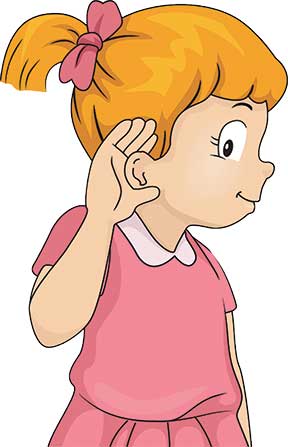Shefali Shah
Busy and noisy restaurants and cafes are mushrooming in urban India. The noisier they are, the more popular they are deemed to be. Yet, if you look around these spaces, the average visitor is fiddling with a mobile or drifting off into his/her private thought. I smile as I find myself doing much the same: the room acoustics are usually so neglected that it is not possible to sustain any meaningful conversation. It takes too much effort and after some feeble attempt, I find that I often withdraw into myself like most other revellers or diners around me.
Noise produces fatigue. Fatigue leads to inattention. The same holds true for learning environments: our classrooms. Classrooms that have poor acoustical design are noisy. Noise disrupts the learning process. Anything that is disruptive leads to inattention. In classrooms that have good acoustical design, the teacher’s voice as well as the voices of classmates is clearly heard; this keeps the students in the classroom connected to the lesson and engaged in discussion. Students who are listening and who remain engaged continue to learn.
Children in classrooms learn a great deal through their auditory systems. Classroom material is presented either through live voice (i.e., the teacher’s voice) or AV materials (using an audio signal).This article aims at helping the reader examine whether classrooms in India are adequately acoustically treated to support learning.
What is classroom noise?
Noise is “any auditory disturbance that interferes with what a listener wants to and/or needs to hear” (American Speech-Language-Hearing Association, ASHA Guidelines, 1995, www.asha.org).
 Noise may arise from outside the classroom, (e.g., the noise of traffic, from the playground, from airplanes overhead), or from within the classroom, (e.g., noisy fans; the hum of the air-conditioning; from lighting systems), or from within the school building (e.g., class bells, noise escaping from one classroom into another, noise in corridors).
Noise may arise from outside the classroom, (e.g., the noise of traffic, from the playground, from airplanes overhead), or from within the classroom, (e.g., noisy fans; the hum of the air-conditioning; from lighting systems), or from within the school building (e.g., class bells, noise escaping from one classroom into another, noise in corridors).
I must confess that my interest as a hearing specialist lies in how noise affects children with hearing loss in classrooms. The reason that I write this article is to share research findings that demonstrate that by acoustically treating all classrooms in school buildings in the USA and by using classroom group amplification systems, such as FM (Frequency Modulation) systems, or the more economical sound-field amplification systems), children with normal hearing benefited significantly, paid better attention, demonstrated better reading scores and teachers were less fatigued at the end of the school day. (Crandell C., & Smalidino, J., 2000; ASHA guidelines, 1995.) The technology used by group amplification systems allows all children to hear the teacher’s voice at an appropriate and consistent level of loudness, irrespective of the teacher’s distance from the child. Further, it allows all children to hear the teacher’s voice more clearly, even in the presence of background noise (e.g., scraping chairs; falling books; shuffling feet of other children). The teacher wears or holds a wireless FM transmitter microphone.
In classrooms that have poor acoustical design, the teacher struggles to be heard over the background noise. The teacher risks straining his/her vocal cords over time and children find it too much of an effort to hear the teacher and their classmates. As they struggle to listen and stay connected to the lesson being taught, children tire and eventually give up trying to pay attention. The less attention they pay, the more they lag behind and so the less incentive there is to keep paying attention. It’s easier and much more fun to distract one’s neighbours, creating a ripple effect of inattention. This becomes a pattern and children begin to perform below their potential; some begin to exhibit delayed development. What manifests as low academic performance is actually a matter of attention and auditory fatigue.
Who does noise impact?
Classroom noise affects children and adults alike. However, the impact of classroom/ background noise on children, particularly children below 15 years is significant. This is because pupils below 15 years of age are still in the process of developing mature language. They are less effective listeners in the presence of background noise (Nileson, Sacks & Hinkley, 2000.) Lastly, children below 15 years of age cannot be relied upon to report their difficulty in not being able to hear the teacher’s voice clearly.
Children with normal hearing who have coughs and colds will find listening in noise challenging. This is due to the fact that their middle ear systems fill up with fluid depending on the severity of the cough or cold, temporarily suppressing their hearing. Studies in the USA consistently report that the common cold is the most common illness in children. This data makes the matter of acoustically treating classrooms nation-wide, both imperative and urgent.
Pupils who have immature auditory attention systems, largely on account of additional difficulties (learning difficulties, hearing difficulty, delayed development, emotional and behavioural disorders) will also struggle to pay attention in the presence of background noise.
Teachers have a 20 percent greater risk of damaging their voice than in other professions. Members of teaching staff in school systems are reported to have successfully been able to preserve their natural teaching voice, free of vocal strain as group amplification systems or FM systems allow them to talk at quieter intensity levels while still being clearly heard (Sapienza, Crandell, and Curtis, 1999).
 Tips on how to create good listening conditions in classrooms
Tips on how to create good listening conditions in classrooms
Classroom acoustics is a specialty which involves modern technology. Acoustical consultants recommend how to modify and adapt layout to achieve acceptable classroom acoustic levels. They measure classroom noise levels, monitor them and also provide cost-effective solutions in choosing classroom group amplification systems.
In order for classrooms to support listening and learning, they must be designed so that the spoken signal is heard fully throughout the classroom by children with normal hearing. This is the work of acoustical consultants.
The signal-to-noise ratio (S/N ratio or SNR) compares the strength of the signal (which in a classroom would be the teacher’s voice) to the strength of background noise. Acoustical consultants use sensitive, calibrated instruments to measure the levels of background noise. They then outline specifically how the classroom can be treated to achieve recommended S/N ratio levels. It is recommended that the acoustical environment in classrooms should allow for a +5 signal-to-noise ratio throughout the classroom (Crandell, Smalidino, J., 2000). This means that the signal (i.e., the teacher’s voice) should be five dB louder than the background noise at all points in the classroom in order for maximum communication to occur.
The underlying principle behind acoustical design aims at dampening background noise and reverberation (i.e., the echo effect) by the use of sound absorbent surfaces. Classroom furniture placed at strategic, recommended position will help reduce classroom reverberation. To learn more refer to file:///C:/Users/Public/Documents/Sound%20Steps/Articles%20for%20Public%20Awareness/TEACHER%20PLUS/Classroom%20Acoustics/Tips%20for%20Creating%20a%20Good%20Listening%20Environment%20in%20the%20Classroom.html.
School authorities have to remember that while they may choose carpeting and curtains for classrooms to dampen the effect of noise, they must allocate sufficient funds to maintain and keep these furnishings clean and dust free in order to maintain classroom hygiene.
As India embraces inclusive education, classroom acoustics deserve attention in school systems. Heads of schools working closely with acoustical consultants must collaborate to provide India’s children with learning environments that support listening.
References
- Flexer, C., Madell, J., (201) Pediatric Audiology, New York: Thieme.
- Smaldino, J., & Flexer, C., (2012) Handbook of Acoustic Accessibility: Best Practices for Listening, Learning and Literacy in the Classroom, New York: Thieme.
- Language, Speech and Hearing Services in Schools • Vol. 31 • 362-370 • October 2000, Classroom Acoustics for children with normal hearing and with hearing impairment, Crandell, C., & Smaldino, J.
- Children Hear Better with FM, A starters guide for parents and teachers, Phonak http://www.phonak.com/content/dam/phonak/b2b/C_M_tools/FM/Children-Hear-Better-with-FM.pdf
The author is an LSLS certified A.V.T. professional. This unique qualification positions her to be the only practicing professional in India to develop listening and spoken language in babies and young children with hearing loss. As Director of her independent early intervention centre ‘Sound Steps’, she and her team work intensively to guide families to raise their babies with hearing loss to listen and talk just like other children their age. Visit www.soundsteps.in for a better understanding of Sound Steps’ work.
